Experts call for early-years STEM education to address critical engineering labour shortage in Malaysia
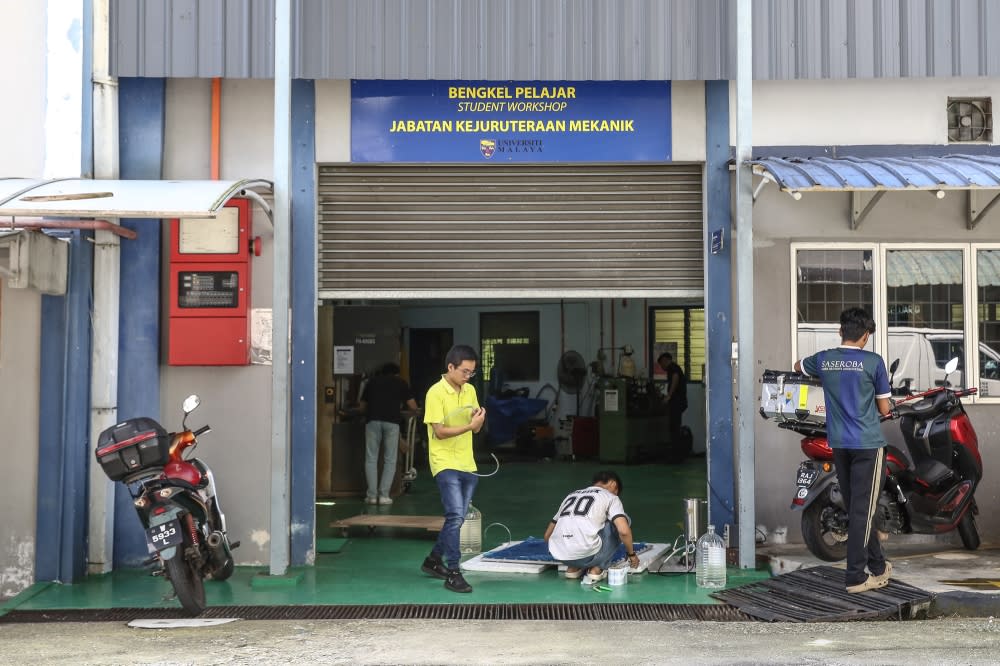
KUALA LUMPUR, May 22 — Malaysia must start teaching STEM subjects in schools as early as possible to address the critical shortage of engineers and high-skilled labour in the country, several experts have said.
Mas Sahidayana, the director of University of Malaya’s (UM) STEM Centre, emphasised that STEM skills need to be nurtured from preschool with the cooperation of parents, teachers, the government and learning institutions, or else Malaysia risks suffering from these labour shortages down the road.
She said despite the efforts of various stakeholders, enrolment rates for Form 4 students in STEM A and B streams remain alarmingly low. In 2023, only 16.64 per cent (about 61,333 students) enrolled in the STEM A package, and just 5.43 per cent (about 20,014 students) chose the STEM B package.
“This has led to a significant imbalance in higher education applications, with twice as many students opting for arts over sciences.
“Meanwhile, there are at least 138 higher education programmes offered by the Ministry of Higher Education that require SPM leavers to come from a STEM A background (122 out of 138 can accept SPM leavers from the STEM B package) and many more polytechnic and other programmes that also require STEM A or B backgrounds.
“This has forced higher institutions to accept students with STEM C backgrounds to fulfil their enrolment needs,” Mas told Malay Mail.
Malaysian Association of Engineers president Datuk Ts Feroz Hanif Mohamed Ahmad said even among those who enrol in engineering programmes, the dropout rate can be high due to the rigorous nature of the coursework.
The ageing workforce in engineering, coupled with rapid technological advancements and industry-specific demand in sectors like tech and renewable energy, is causing a skills gap.
This shortage leads to delayed projects, increased costs, and higher wages. Consequently, it can hinder economic growth and lead to outsourcing or offshoring of engineering tasks, potentially resulting in domestic job losses and quality control challenges.
“Addressing these challenges requires a concerted effort by educational institutions, industries, and governments to enhance STEM education, provide continuous professional development, and create attractive working conditions for engineers.
“Other factors contributing to brain drain include limited career growth opportunities, insufficient industry infrastructure, political instability, restrictive policies, and a perceived lack of talent recognition.
“Moreover, some individuals seek better quality of life, work-life balance, and access to superior education and healthcare systems abroad. Addressing these issues involves training and retaining skilled STEM teachers to provide quality education and encourage student interest in these fields,” he said.
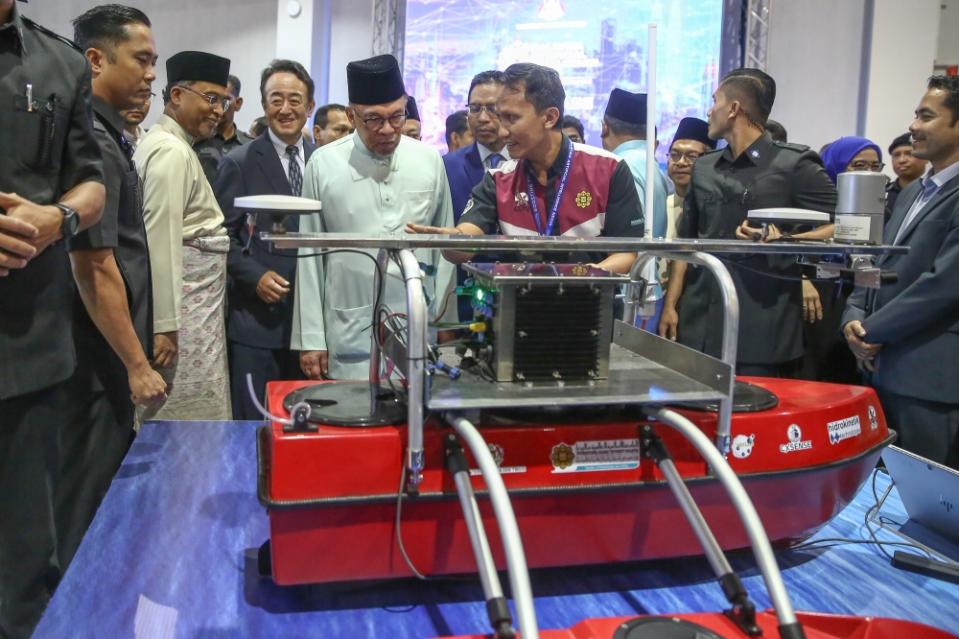
Prime Minister Datuk Seri Anwar Ibrahim and Higher Education Minister Datuk Seri Zambry Abdul Kadir visit an exhibition during the launch of the 2024 Malaysia Artificial Intelligence Nexus at World Trade Centre in Kuala Lumpur, May 10, 2024. — Picture by Yusof Mat Isa
Prime Minister Datuk Seri Anwar Ibrahim has been urging all parties, especially the Ministry of Higher Education (MoHE), to address Malaysia’s significant shortage of engineering experts, which he noted has reached 30,000.
This call to action comes as the nation increasingly adopts artificial intelligence (AI) to enhance efficiency and improve living standards.
Malaysia’s employment market is undergoing dramatic changes due to several variables that will redefine how the country works, with banking, healthcare, engineering and IT, digital marketing and management experts among the top jobs that will be available in the near future.
At the 2024 Malaysia Artificial Intelligence Nexus (MY AI NEXUS) programme, Anwar said that representatives of Nvidia, Google, Microsoft, Amazon, Huawei and Ericsson all said that in terms of discipline, our new engineers and science graduates were quite good, but they were still lacking in terms of the skills, abilities and specialisation required.
He said the country lacked high-skilled engineers, despite producing engineering graduates that were of quality.
Professor Mohamad Sattar Rasul, Associate Professor in TVET and STEM Education from Universiti Kebangsaan Malaysia (UKM), said the reason for that was the low level of interest in STEM subjects.
“Proper pure science enrolment is only about 19 per cent, meaning students who are taking physics, chemistry, and biology. So despite the Ministry of Education (MoE) reporting overall STEM enrolment at 30 to 40 per cent, pure science enrolment is actually much lower,” he said.
He also pointed out that loose performance measurements in schools contribute to inaccurate data and affect the 60:40 policy, which aims to enrol 60 per cent of students in science and technical streams and 40 per cent in arts streams.
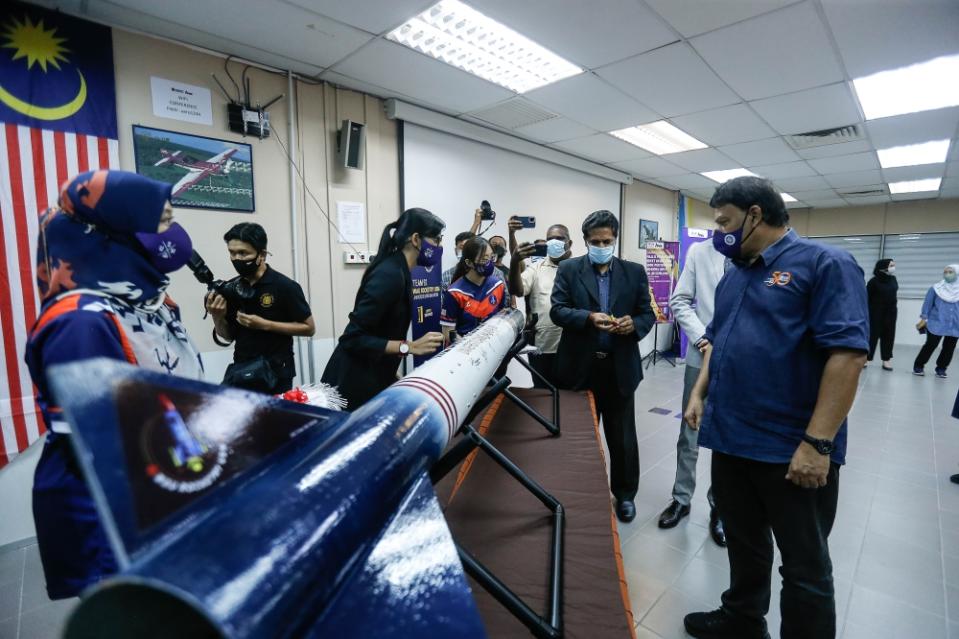
To fill the engineering gaps in the market, Professor Mohamad Sattar Rasul suggested making science and mathematics more engaging in schools and changing delivery and assessment methods. He also agreed with Datuk Ts Feroz Hanif Mohamed Ahmad that low salaries and job dissatisfaction contributed to the shortage of engineers, with many working for less than RM3,000 a month even after eight to nine years in the same company. — Picture BY Sayuti Zainudin
Fixing the system
To fill the engineering gaps in the market, Professor Sattar suggested making science and mathematics more engaging in schools and changing delivery and assessment methods. He also agreed with Feroz that low salaries and job dissatisfaction contributed to the shortage of engineers, with many working for less than RM3,000 a month even after eight to nine years in the same company.
“We must make science and mathematics fun and interesting in schools, nurture that interest by changing our delivery and ways of assessment of these ‘sekolah cemerlang’.
“The industry and the government also play a part in the drought of engineers and highly skilled labour as salaries are low, many work in the same company for eight to nine years still on less than RM3,000 a month, while others seem to be paid well. This disparity causes distress and they end up losing interest.
“So even though the government is trying to increase the minimum wage, there’s a stigma there that engineers don’t get paid well so many are turning away,” he said.
Major Prebagaran Jayaraman (R), chairman of the Chartered Management Institute (CMI) noted that many SPM leavers and former engineers turn to the gig economy for better pay and less stress.
To entice them to pursue careers in engineering, management, and IT, we need to provide opportunities for upskilling and reskilling,” said Prebagaran, who is also a part-time lecturer at Universiti Teknologi Malaysia's School of Professional and Continuing Education.
He pointed out the importance of part-time learning opportunities and professional certificates from platforms like CMI, OpenLearning, LinkedIn Learning and Coursera.
“In today’s landscape, young individuals are presented with numerous avenues within the gig economy, exemplified by platforms like Grab or FoodPanda. Nonetheless, enticing them towards professions in engineering, management, and IT demands a concerted effort from the country to equip them with essential skills and clear pathways for skill acquisition.
“A part-time learning opportunity is something many look for to upskill and reskill themselves. If we provide these opportunities, students will fill the jobs. Currently, many students are starting their own online businesses and are reluctant to continue their studies due to costs and lack of interest.
“For graduates, there is often uncertainty about where to go to upskill. Platforms like OpenLearning and LinkedIn Learning offer online courses, and there are also options like Coursera and CMI where they can earn professional certificates and degrees from top universities and companies.
“From there, you’ll have plenty of opportunities for career advancement, such as moving into supervisory roles. These roles require leadership and management skills. Institutes like CMI offer training in these areas, helping individuals learn from experience. If they are aware of these opportunities, they will be more motivated to stay in their jobs, knowing they have a place to continue learning. This can lead to a better future and higher salaries,” he said.
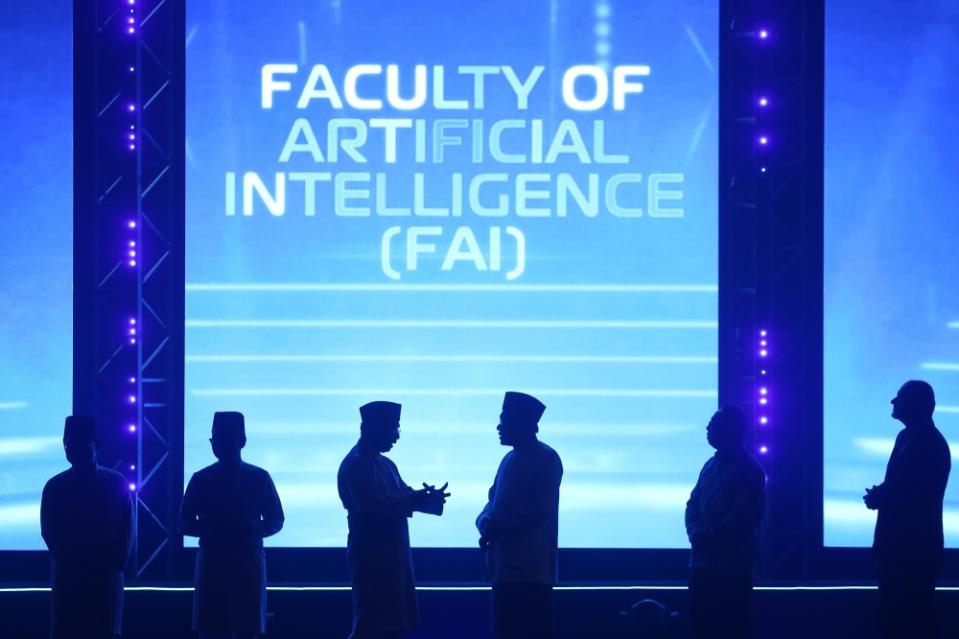
Prime Minister Datuk Seri Anwar Ibrahim talks with Higher Education Minister Datuk Seri Zambry Abdul Kadir during the launch of the 2024 Malaysia Artificial Intelligence Nexus at World Trade Centre in Kuala Lumpur, May 10, 2024. — Picture by Yusof Mat Isa
To drive interest in jobs related to STEM, Anwar has been pushing the importance of enhancing Technical and Vocational Education and Training (TVET) programmes to address the engineer shortage.
He identified weaknesses in the country’s training in mathematics, science, engineering, AI, and TVET at the highest levels and highlighted the need to focus on these fields to attract foreign investment.
Deputy Prime Minister Datuk Seri Ahmad Zahid Hamidi had said there is a need to continue strengthening TVET programmes involving the collaboration of 12 ministries and government agencies. He said the National TVET Council, which he chairs, had successfully coordinated these programmes to avoid overlapping roles.
Mas said that by 2025, Malaysia is aiming to become a major destination for high-tech industry investment through the National Industry 4.0 Policy (Industry4WRD). This policy would increase the manufacturing sector’s contribution to the national economy and provide more job opportunities for STEM graduates.
However, there is a disconnect between what is being taught and job market needs.
“At the school level, counsellors play a crucial role in exposing students to STEM-related job opportunities and industries, ideally starting in Form 1. This early exposure should guide students in choosing the appropriate STEM packages by the time they reach Form 4. At the higher education level, sector-based university curricula should be remapped with industry cooperation, especially from Industry 4.0 and high-tech sectors.
“The low enrolment in STEM A and STEM B packages forces higher institutions to accept students with a STEM C background into their STEM-based programmes. This mismatch means these students often struggle with STEM subjects, particularly Additional Mathematics. As a result, nearly 3,000 (5 per cent) of the 60,000 university students majoring in STEM fields change their course each year.
“Furthermore, data shows that over 40 per cent of STEM graduates are not employed in their field of study. Specifically, 43 per cent of engineering graduates and 45 per cent of technology graduates do not work in their respective fields upon graduation,” she said.
Major Prebagaran agreed with Mas, adding that apart from the right subjects, pinpointing practical real-time work experience with the ability to learn and upskill as another reason for the job disparity.
He said that achieving academic excellence doesn’t automatically equate to being job ready.
He pointed out that even top-performing students may encounter challenges when transitioning to practical work, underscoring the importance of experiential learning and opportunities for upskilling.
“Even top students may struggle with practical work; being a top student in the classroom is different from excelling in practical work. Not all can seamlessly transition their academic success into high-calibre performance in the workplace. Learning and adaptation are essential, especially when facing daunting real-world scenarios.
“It’s crucial to gain real working experiences through programmes offered by institutions like CMI or any open learning facilities that they’re better prepared for,” he added.
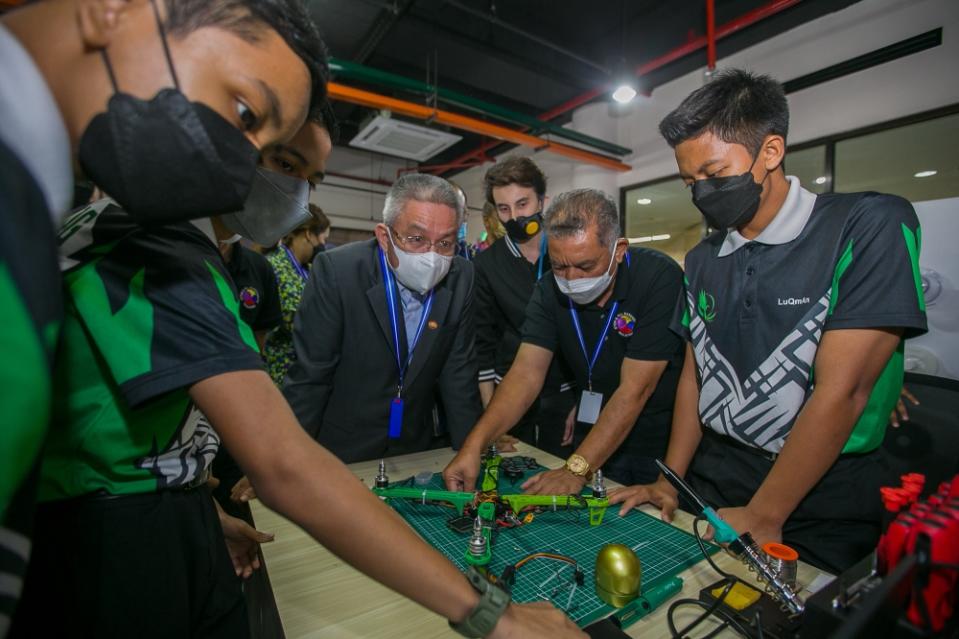
To attract more students to engineering studies, Datuk Ts Feroz Hanif Mohamed Ahmad recommended the introduction of nationwide awareness campaigns targeting students, parents, and educators to showcase the diverse and lucrative career opportunities in STEM fields. — Picture by Devan Manuel
Promoting and encouraging
To attract more students to engineering studies, Feroz recommended the introduction of nationwide awareness campaigns targeting students, parents, and educators to showcase the diverse and lucrative career opportunities in STEM fields.
Financial incentives like the MEXT scholarships from Japan can alleviate cost concerns and attract students to study engineering abroad, he added.
Additionally, investments in educational infrastructure, collaborations with industry partners, and initiatives to improve teaching quality, especially in rural areas, are crucial.
Moreover, targeted programmes for underrepresented groups, such as women, can help broaden the appeal of engineering and fill skill gaps in the sector.
“While Malaysia is making efforts to address these challenges and attract more students to engineering studies, continuous improvement in educational quality, better infrastructure, and more inclusive policies will be key to sustaining and increasing student interest in this vital field,” he said.
Mas said that transformations in teaching, learning and assessment are important to attracting a new generation’s interest in STEM subjects and creating the confidence to learn those STEM subjects.
“Revamping teaching methods, learning approaches, and assessment techniques are crucial in garnering interest from the current generation towards STEM subjects, instilling them with the confidence to pursue these disciplines.
“Implementing a STEM Mentor-Mentee initiative involving industry stakeholders exposes students to relevant job market demands and facilitates professional development for STEM educators, ensuring they possess the necessary pedagogical skills to engage students effectively.
“Furthermore, the introduction of a STEM Leadership Programme aims to cultivate leaders equipped with a comprehensive understanding of contemporary STEM challenges,” she said. According to the Board of Engineers Malaysia, 187,900 engineers officially registered last year, while the ratio of engineers to the country’s population was 1:170 compared to 1:100 for developed countries such as Germany and France.
Microsoft will also be investing US$2.2 billion in Malaysia, as Silicon Valley eyes a bigger South-east Asia footprint. The investment aims to develop cloud technology and AI through establishing a national AI centre of excellence and training up to 200,000 people.
Nvidia Corporation, a United States-based multinational technology company, is the world’s sixth-largest company in terms of market capitalisation.
It has expressed its willingness to support Malaysia’s aspiration of being among the top 20 countries in terms of AI and has agreed to help develop the AI ecosystem in Malaysia in terms of building a centre of excellence to facilitate AI learning and research, as well as creating Malaysia’s own AI cloud computing system.
Nvidia will have a strategic partnership with Malaysian conglomerate YTL to build an AI data centre involving RM20 billion in investment.



